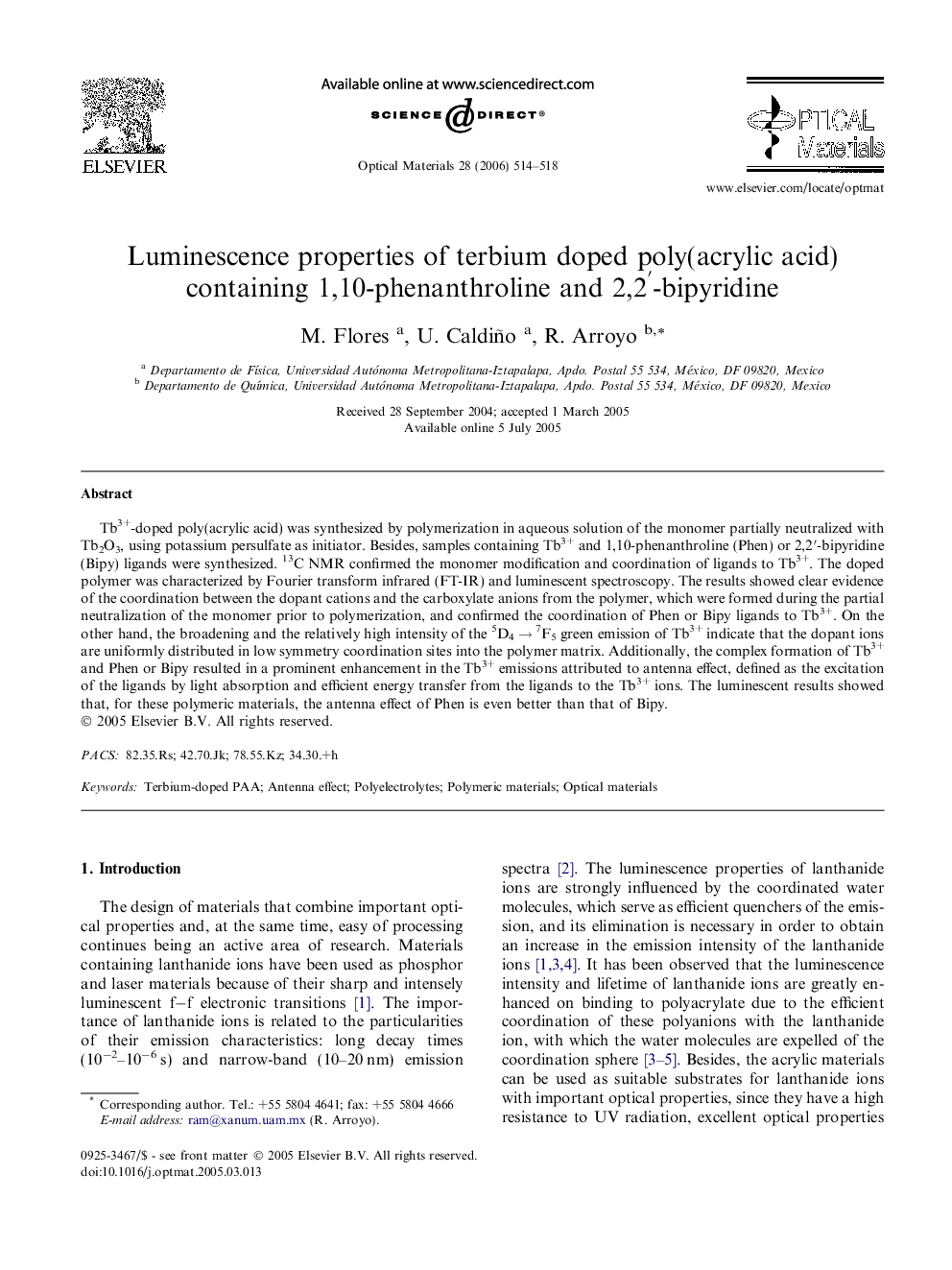| Article ID | Journal | Published Year | Pages | File Type |
|---|---|---|---|---|
| 1497188 | Optical Materials | 2006 | 5 Pages |
Abstract
Tb3+-doped poly(acrylic acid) was synthesized by polymerization in aqueous solution of the monomer partially neutralized with Tb2O3, using potassium persulfate as initiator. Besides, samples containing Tb3+ and 1,10-phenanthroline (Phen) or 2,2â²-bipyridine (Bipy) ligands were synthesized. 13C NMR confirmed the monomer modification and coordination of ligands to Tb3+. The doped polymer was characterized by Fourier transform infrared (FT-IR) and luminescent spectroscopy. The results showed clear evidence of the coordination between the dopant cations and the carboxylate anions from the polymer, which were formed during the partial neutralization of the monomer prior to polymerization, and confirmed the coordination of Phen or Bipy ligands to Tb3+. On the other hand, the broadening and the relatively high intensity of the 5D4 â 7F5 green emission of Tb3+ indicate that the dopant ions are uniformly distributed in low symmetry coordination sites into the polymer matrix. Additionally, the complex formation of Tb3+ and Phen or Bipy resulted in a prominent enhancement in the Tb3+ emissions attributed to antenna effect, defined as the excitation of the ligands by light absorption and efficient energy transfer from the ligands to the Tb3+ ions. The luminescent results showed that, for these polymeric materials, the antenna effect of Phen is even better than that of Bipy.
Keywords
Related Topics
Physical Sciences and Engineering
Materials Science
Ceramics and Composites
Authors
M. Flores, U. Caldiño, R. Arroyo,
